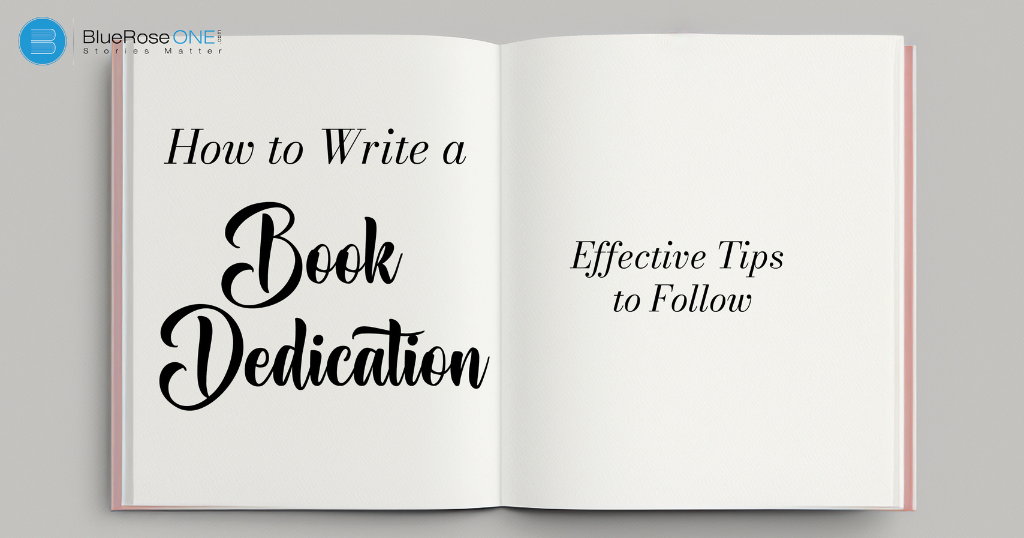
How to Write a Book Dedication: Best Effective Tips to Follow
What is a Book Dedication? A dedication in the context of a book is a part in which the author communicates their unique thoughts, thanks, or recognition to persons or groups who have personal value in their lives or who have contributed to the development of the book. It is a means for the author to express gratitude, affection, or respect to people who have had a significant effect on them or the project. Dedications are often found at the beginning of a book, typically on the dedication page, which is usually located on one of the opening pages before the main content of the book begins. The language used in dedications can vary widely, ranging from formal and traditional to more personal and creative expressions of thanks. Some authors use dedications to honour family members, friends, mentors, or anyone who has inspired or supported them during the writing process or in their personal journey. Dedications add a personal touch to a book, and they provide insight into the author’s relationships and the emotional connections that influenced their work. You may also like: Positive Character Traits And Why They Are Crucial In this comprehensive guide, we will explore effective tips to help you write a compelling book dedication. Understand the Purpose of a Book Dedication Identify Your Audience Reflect on Your Journey Choose the Right Tone Be specific and personal Prioritise and include key individuals Consider dual dedications Incorporate quotes or poetic elements Review and edit thoughtfully Express Gratitude Without Obligation Understand the Purpose of a Book Dedication Before you begin writing, it’s critical to understand the objective of a book dedication. Dedication pages are usually included at the opening of a book and are used to commemorate people who have inspired or supported the author. This might include family members, friends, mentors, or anybody who has provided support along the way. You may also like: Is Kindle Direct Publishing right for Your Next Book? Identify Your Audience When writing the dedication, keep your readership in mind. If your book is aimed at a certain audience, have your dedication reflect that. Whether you’re writing for a general audience or a specific market, make sure your tone and substance are appealing to your readers. Reflect on Your Journey Take a moment to reflect on your writing journey. Consider the challenges you’ve faced, the triumphs you’ve celebrated, and the individuals who stood by you during both highs and lows. Your dedication should encapsulate the essence of this journey. Choose the Right Tone The tone of your dedication sets the emotional tone for the entire book. Decide whether you want it to be heartfelt, humorous, or a mix of both. A sincere and genuine tone often resonates well with readers, creating a connection that goes beyond the pages of your book. Be specific and personal Avoid generic statements. Instead, be specific about why you’re dedicating the book to certain individuals. Share anecdotes, inside jokes, or personal experiences that highlight the depth of your relationship with the dedicatees. This personal touch adds authenticity to your dedication. You may also like: How to Write An Epilogue: Step-By-Step Guide Prioritise and include key individuals If you have numerous people to acknowledge, prioritise them based on their impact on your writing journey. Include the most significant individuals first, gradually expanding to others. This ensures that the dedication remains focused and heartfelt. Consider dual dedications If multiple individuals have played crucial roles, consider a dual dedication. This involves dedicating the book to two or more people, each with a distinct acknowledgment. This approach is especially effective when the individuals have different relationships with the author. Incorporate quotes or poetic elements Enhance the literary appeal of your dedication by incorporating relevant quotes, poetic elements, or lines from your own work. This adds a layer of artistry to the dedication, making it not only a gesture of appreciation but also a captivating introduction to your book. Review and edit thoughtfully Once you’ve drafted your dedication, review and edit it thoughtfully. Ensure that the language is clear, concise, and free of errors. Consider seeking feedback from trusted friends or colleagues to gain insights from different perspectives. You may also like: List of 15 Prestigious Literary Awards in 2024 Express Gratitude Without Obligation While it’s common to express gratitude, avoid making your dedication feel like an obligation. Be sincere in your acknowledgments, and let the words flow naturally. Forced or insincere dedications can be apparent to readers. Here are some examples of book dedications from various genres: Simple and Personal: for my wife, who believed in me from the start. Gratitude: To my parents for their unwavering support and love. In Memory: In loving memory of [Name], whose passion for literature inspired this work. For a Special Someone: For [Name], my muse and my constant source of inspiration. Family Dedication: To my children, who remind me every day of the magic in the world. From “A Brief History of Time” by Stephen Hawking: This book is dedicated to Jane, Robert, and Timothy.“For Jane, with loveFor Jane, with whom I have lived almost half my life. And for Robert and Timothy, without whom it wouldn’t have been worth living.” From “Harry Potter and the Deathly Hallows” by J.K. Rowling: The dedication of this book is split in seven ways:To Neil,To Jessica,To David,To Kenzie,To Di,To Anne,and to you,if you have stuck with Harry until the very end. From “Eat, Pray, Love” by Elizabeth Gilbert: This book is dedicated to everyone who has ever had a heartache and to every person who has had the courage to pursue his or her own path.To everyone who has walked into the middle of nowhere and realised that his or her own path home has been the entire journey and has changed their life because of it:. From “The Book Thief” by Markus Zusak: For Elisabeth and Helmut Zusak, with love and admiration.“It is said that your life flashes before your eyes just before you die. That is true; it’s called life.”“Death…
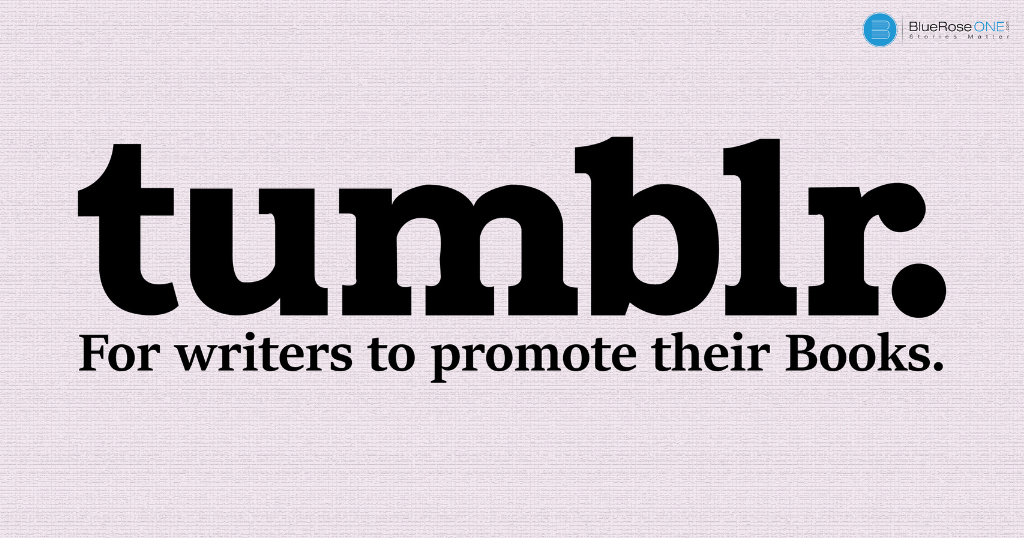
Tumblr for Book Marketing: For Writers to Promote Their Books.
In the ever-changing world of book marketing, authors are constantly looking for new ways to increase the visibility of their works. Tumblr, a different microblogging and social networking site, has risen as an enthralling location for writers to engage with followers and enhance their book promotion efforts. Tumblr provides an engaging environment for authors to narrate their experiences, exchange thoughts, and develop an engaged community as a dynamic platform that smoothly mixes visual components with succinct text. Founded in 2007, Tumblr has evolved into a creative hub, attracting diverse content creators, including writers, artists, and photographers. Its unique blend of social networking features and microblogging capabilities has engendered a space where brevity meets creativity. Writers can not only showcase their literary prowess through succinct posts but also curate visually appealing content that resonates with their audience. The platform’s user-friendly interface facilitates seamless content sharing, making it an ideal canvas for authors to paint their narratives. Tumblr’s ecosystem is characterized by the extensive use of tags, allowing content to be categorized and discovered by a broader audience. This tag-centric approach aligns with the interests of writers seeking to reach specific reader demographics. Whether aspiring to connect with fellow writers, engage with literature enthusiasts, or simply broaden their readership, Tumblr provides a fertile ground for authors to plant the seeds of their literary presence. In this blog article, we will go over eight complete strategies meant to help authors leverage Tumblr efficiently. These stages are designed to help authors navigate Tumblr’s distinctive terrain, from creating an appealing Tumblr presence to carefully using tags and connecting with the platform’s active community. By digging into the complexities of this dynamic platform, writers may unleash its potential, creating a synergistic environment in which their literary works thrive and resonate with a growing audience. Join us on this adventure as we decipher Tumblr’s complexities and reveal the revolutionary influence it may have on writers’ book marketing tactics. Establish Your Tumblr Presence Curate Engaging Content Leverage Tumblr’s Community Showcase Multimedia Content Run Engaging Contests and Giveaways Utilize Tags Strategically Collaborate with Fellow Writers Drive Traffic to Your Author Platform Establish Your Tumblr Presence: Building a compelling Tumblr profile is the foundational step in creating an impactful presence on the platform. Begin by crafting a concise yet engaging bio that encapsulates your writing journey, preferred genres, and any upcoming literary projects. This bio serves as a snapshot of your identity as a writer, providing potential readers with a quick overview of what they can expect from your Tumblr content. Select a visually appealing profile picture that resonates with your writing persona, offering an immediate visual connection to your audience. For instance, envision JohnWriter’s Tumblr profile, where a captivating profile picture hints at his passion for fantasy writing. The carefully chosen blog theme complements the aesthetic of his upcoming magical realism novel, providing visitors with a cohesive and immersive experience. By investing time in these visual elements, writers can establish an inviting and cohesive Tumblr presence that intrigues potential readers and fellow writers alike. Curate Engaging Content The heart of Tumblr lies in its emphasis on diverse and visually rich content. Writers should leverage this by sharing a variety of content that provides insights into their literary world. Share compelling excerpts from your books to entice readers, offering a taste of your writing style and narrative tone. Additionally, provide behind-the-scenes glimpses into your writing process, creating a sense of intimacy and connection with your audience. Consider SarahAuthor’s Tumblr, where she curates a visually stunning collection of quotes extracted from her novels. Accompanied by aesthetically pleasing graphics, these snippets not only showcase the essence of her writing but also serve as shareable content that resonates with her readers. By blending text and visuals seamlessly, writers can craft engaging and shareable content that enhances their Tumblr presence and captivates a broader audience. You may also read: A Complete List of Anuja Chuahan Books Leverage Tumblr’s Community Tumblr thrives on its sense of community, making it imperative for writers to actively engage with this dynamic network. Participate in relevant tags, challenges, and discussions that align with your literary niche. By doing so, you not only contribute to the ongoing conversations but also increase the visibility of your posts. Follow and interact with fellow writers, bloggers, and potential readers, fostering genuine connections within the Tumblr writing community. Take inspiration from MarkNovelist, who actively participates in Tumblr’s #WritersWednesday tag. By sharing insights into his writing process and discovering like-minded writers, MarkNovelist not only expands his network but also exposes his work to a broader audience. Leveraging Tumblr’s community features allows writers to tap into the platform’s collective energy, creating a supportive environment that can significantly boost a book’s visibility. Showcase Multimedia Content Tumblr’s multimedia-friendly environment provides writers with a canvas to showcase diverse content formats. Incorporate multimedia elements such as book trailers, audio snippets, or exclusive interviews to add depth to your Tumblr presence. These dynamic additions create an immersive experience for your audience, catering to various preferences and enhancing the overall engagement with your content. Consider EmilyWordsmith’s approach, where she utilizes Tumblr’s video feature to share animated snippets from her graphic novel. This not only serves as a teaser but also generates anticipation among her followers, leveraging multimedia to bring her storytelling to life. By embracing different content formats, writers can enrich their Tumblr profiles and offer followers a multifaceted experience that goes beyond traditional text-based posts. Run Engaging Contests and Giveaways Organizing contests and giveaways on Tumblr presents a powerful strategy to boost reader engagement and expand your book’s reach. Design contests exclusive to your Tumblr audience, encouraging participants to reblog, like, and share your content to enter. Offering enticing prizes such as signed copies, limited edition merchandise, or personalized experiences further incentivizes participation. Look to JamesAuthor as an example, who orchestrates a Tumblr-exclusive giveaway. By prompting followers to share their favorite quotes from his works for a chance to win a signed copy of his latest book, JamesAuthor not only generates…
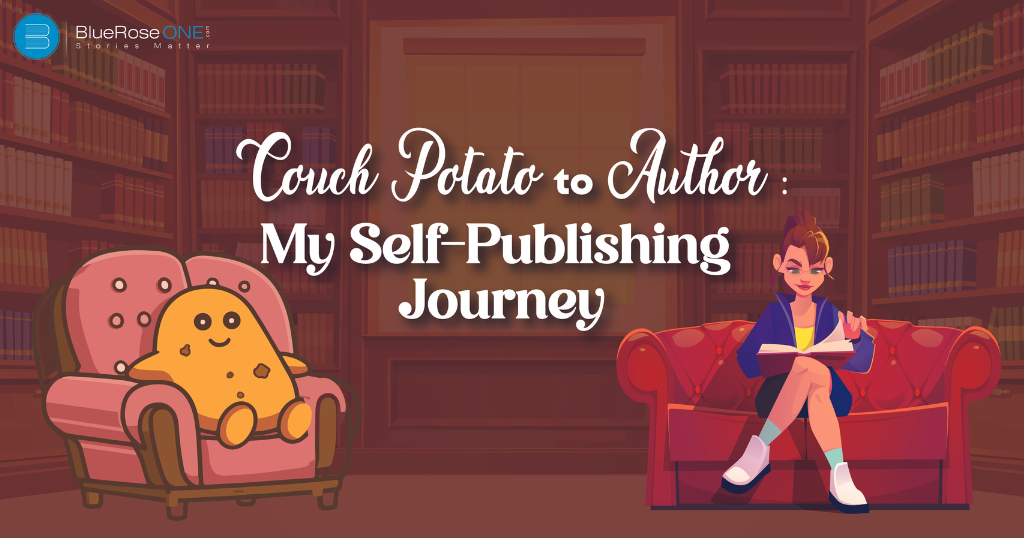
From Couch Potato to Author: My Self-Publishing Journey
Our protagonist, aka our authors, who were once self-proclaimed “couch potatoes,” embarked on a transforming journey and today revealed the exciting story of their self-publishing journey. In this enthralling blog, aspiring authors receive unique insights into the struggles, victories, and vital lessons learned along the way. The tale begins with the promise of inspiration, leading readers through the astonishing metamorphosis of someone who formerly identified as a casual observer to now becoming a successful novelist. This trip not only records our protagonist’s personal growth and perseverance, but it also acts as a beacon for others considering their own foray into the realm of self-publishing. As we read through this blog, we see the transformation from a couch-dwelling dreamer to a motivated author, providing a personal experience that is both relatable and motivational for anyone aspiring to share their stories with the world. The Spark of Creativity Beating Procrastination The Writing Expedition Choosing the Indie Route Crafting a Captivating Cover Mastering the Editing Maze Setting Up Shop Creating Your Author Haven Cracking the Marketing Code Navigating the Rollercoaster Milestones in the spotlight Invaluable Lessons Unveiled The Spark of Creativity Just like many others, our main character’s journey started with a simple yet powerful idea. Imagine a vivid dream that stuck with them after waking up, urging them to turn its magic into a story. This one idea sparked the beginning of their writing adventure. Beating Procrastination Confronted with the giant hurdle of procrastination, our storyteller unearthed the game-changing magic of discipline and routine. They tackled this challenge by creating a writing schedule, setting achievable word count goals, and carving out a dedicated workspace. These small but mighty steps turned lofty dreams into tangible progress. You may also like: Is Kindle Direct Publishing right for Your Next Book? The Writing Expedition The expedition through the writing process resembled a thrilling rollercoaster ride of emotions. Building characters, weaving plotlines, and ensuring the story’s flow demanded unwavering dedication and creative prowess. Picture this: hitting word count goals as a secret weapon to keep the creative engine chugging along, triumphing over the dreaded writer’s block. This journey isn’t just about writing; it’s a saga of conquering doubt, embracing discipline, and transforming a single seed of inspiration into a flourishing tale. It’s a beacon for every dreamer contemplating their own dive into the captivating world of storytelling. Choosing the Indie Route With the manuscript firmly in their grip, our main character stood at a crossroads—a crucial decision on whether to embark on the self-publishing adventure. Opting for this indie route meant holding the reins of creativity and having the final say. The journey unravels the self-publishing universe, breaking down platforms and underscoring the game-changing roles of professional editing and captivating cover design. Crafting a Captivating Cover Despite the age-old saying of not judging a book by its cover, our storyteller recognised the sheer power of an eye-catching book cover. The narrative takes us through a collaborative dance with a skilled designer, turning abstract concepts into a visual masterpiece that captures the essence of the story. It dives into the importance of visual allure in luring in potential readers and the pivotal role it plays in the realm of marketing. Mastering the Editing Maze The editing stage, likened to a refining crucible, worked its magic, turning the raw manuscript into a polished literary gem. Our protagonist unfolds the tales of working alongside professional editors, shedding light on the invaluable nature of constructive criticism. The blog emphasises the transformative journey the narrative underwent, emerging radiant and refined after multiple rounds of meticulous editing. This isn’t just about publishing a book; it’s about steering through the uncharted waters of self-publishing, where every decision becomes a compass leading to success. It’s a beacon for aspiring authors, demystifying the daunting process and turning it into an exhilarating adventure. You may also like: List of 15 Prestigious Literary Awards in 2024 Setting Up Shop Beyond the thrill of crafting a compelling story, the self-publishing odyssey demands laying the groundwork for distribution and marketing. Dive into the nuts and bolts of the process—snagging that all-important ISBN, picking the right distribution channels, and getting down to the nitty-gritty of formatting. These steps aren’t mere technicalities; they’re the secret ingredients to making your book accessible to a global audience. Creating Your Author Haven In this digital age, having an author’s online haven is as crucial as the plot twist in a mystery novel. Our storyteller takes you through the ropes of building that essential author platform, from setting up a snazzy website to navigating the vast landscape of social media. Learn the ropes of not just writing your story but also telling it to the world in a way that keeps readers hooked and publishers intrigued. Cracking the Marketing Code In the world of self-publishing, authors are the maestros of their marketing symphony. This segment unravels the mysteries behind successful book launches, the art of promotional strategies, and the game-changing role of early reviews. Discover the potent magic of social media and understand the intricate dance with book bloggers that can make or break your self-publishing escapade. It’s not just about writing a book; it’s about crafting a brand, a story that goes beyond the pages and resonates in the hearts of readers. Navigating the Rollercoaster From cosy couch cushions to the tumultuous world of self-publishing, the transition wasn’t a smooth ride. Our storyteller opens up about facing self-doubt, tackling marketing roadblocks, and riding the sales rollercoaster. Think of it as climbing a literary mountain; sometimes the path is steep and the footing is unsure. It’s not about avoiding the falls but about getting up, dusting off, and climbing again. There’s a shared camaraderie with famous self-published authors like Andy Weir, who initially offered his book “The Martian” for free on his blog, facing rejections until readers demanded more. Milestones in the spotlight In the vast expanse of self-publishing, every victory, big or small, deserves a spotlight. The blog narrates the protagonist’s journey of resilience,…
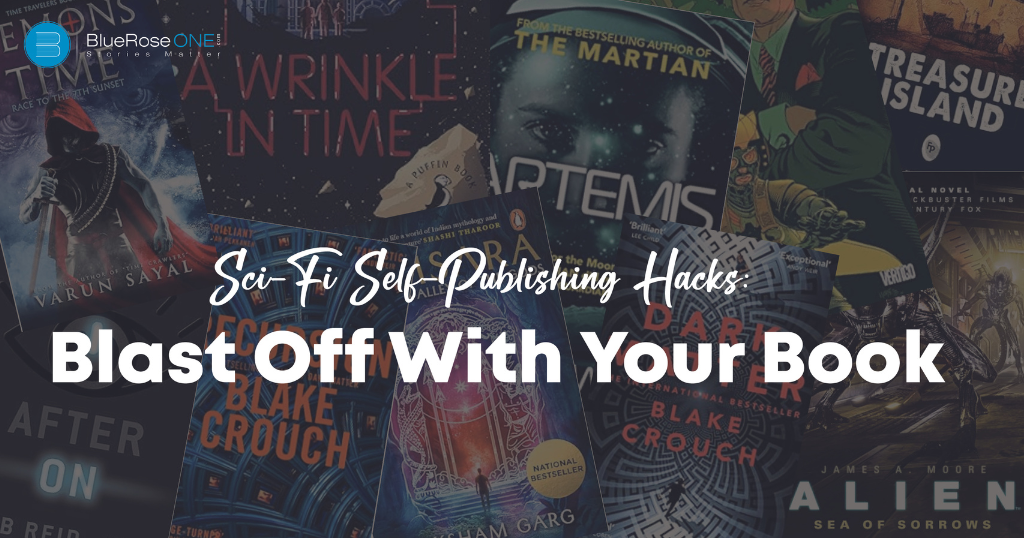
Sci-Fi Self-Publishing Hacks: Blast Off With Your Book
Science fiction authors are traversing the enormous field of self-publishing to share their fascinating worlds with eager fans. This site is your mission control if you’re a sci-fi writer preparing to launch your novel into the literary cosmos. Join us as we investigate self-publishing methods that will take your sci-fi masterpiece to new heights and attract the attention of people from all over the cosmos. The Cosmic Blueprint: Crafting a Captivating Sci-Fi Manuscript The Launchpad: Preparing Your Manuscript for Self-Publishing Navigating the Interstellar Marketplace: Publishing Platforms The Quantum Connection: Engaging with Your Readers The Cosmic Blueprint: Crafting a Captivating Sci-Fi Manuscript Embrace the Unexplored Frontiers: Unique Concepts and IdeasDiving into the cosmos of imagination is the hallmark of exceptional science fiction. Authors are tasked with transcending the ordinary and ushering readers into uncharted territories. By introducing concepts that challenge conventions, authors create mental landscapes that captivate and intrigue. Consider Philip K. Dick’s “Do Androids Dream of Electric Sheep?” where he explores the blurred line between humans and artificial intelligence, challenging societal norms and perceptions.Crafting a unique blend of technology, society, and speculative science is crucial. In William Gibson’s “Neuromancer,” he merges cyberpunk aesthetics with a dystopian future, presenting a world where artificial intelligence, virtual reality, and corporate intrigue converge. This fusion sets the novel apart, creating an immersive experience for readers. Develop multi-dimensional characters.In the vast expanse of science fiction, characters serve as celestial bodies, guiding readers through the narrative cosmos. Forging characters with depth and complexity involves exploring their psychological and emotional facets. In Isaac Asimov’s “Foundation” series, Hari Seldon is not merely a scientist but a visionary navigating the complexities of predicting the future.Crafting relatable protagonists and compelling antagonists is equally vital. Consider Frank Herbert’s “Dune,” where Paul Atreides undergoes a profound transformation, resonating with readers on a personal level. The antagonist, Baron Harkonnen, is not a mere villain but a character with intricate motives, adding layers to the narrative. Master the Art of World-BuildingConstructing immersive and believable worlds is the gravitational force holding a sci-fi narrative together. In Arthur C. Clarke’s “2001: A Space Odyssey,” the meticulously detailed portrayal of space travel and encounters with extraterrestrial intelligence creates a world that feels tangible and awe-inspiring.Developing the rules that govern your universe, from physics to culture, establishes the framework of the narrative. In Ursula K. Le Guin’s “The Left Hand of Darkness,” the intricate exploration of a planet with a unique biology and culture not only adds depth but also serves as a commentary on gender and societal norms.Ensuring consistency in world-building is paramount. Inconsistent rules can disrupt the reader’s suspension of disbelief. Neal Stephenson’s “Snow Crash” maintains consistency in its depiction of a cyberpunk future where the virtual and physical realms seamlessly coexist. In conclusion, these elements form the celestial coordinates for a captivating sci-fi journey where unexplored frontiers, multi-dimensional characters, and meticulously crafted worlds converge to create a literary universe that beckons readers to explore beyond the ordinary. The Launchpad: Preparing Your Manuscript for Self-Publishing Editing Warp Drive: Polishing Your ManuscriptEngaging professional editors is akin to fine-tuning the warp drive of your spacecraft before launching into the literary universe. These experts ensure your manuscript is free from grammatical errors, plot inconsistencies, and other editorial hiccups. For instance, in Andy Weir’s “The Martian,” meticulous editing ensures scientific accuracy, enhancing the overall credibility of the narrative. Additionally, considering beta readers provides diverse feedback, helping authors identify blind spots and areas for improvement. Their input serves as a crucial navigational tool in shaping a manuscript to its full potential. Polishing dialogue and narrative flow, as seen in the works of Octavia Butler, elevates the reading experience, captivating the audience with seamless prose and engaging storytelling. Eye-Catching Cover Design: The Visual WormholeInvesting in a professional cover designer is a warp-speed jump into grabbing readers’ attention. A cover is the visual wormhole that transports potential readers into the heart of your sci-fi tale. Consider the cover of William Gibson’s “Neuromancer,” designed by Rick Berry. Its cyberpunk aesthetics not only align with genre expectations but also stand out, inviting readers into a visually compelling world. Aligning your cover with genre expectations ensures that your book is recognisable to its intended audience, while incorporating unique visual elements helps it stand out in a crowded galaxy of bookshelves. Galactic Synopsis: Crafting an Irresistible Book BlurbThe galactic synopsis, or book blurb, is the gravitational force that pulls readers into your literary orbit. Crafting a compelling book blurb requires teasing without revealing too much, much like the blurb for Arthur C. Clarke’s “2001: A Space Odyssey.” It hints at the discovery of a mysterious monolith without giving away the entire plot. Emphasising the stakes and unique elements of your story, as seen in the blurb for Philip K. Dick’s “Do Androids Dream of Electric Sheep?” heightens curiosity. The mention of a bounty hunter chasing rogue androids sets the stage for a narrative full of intrigue and moral ambiguity. In essence, the book blurb serves as the gravitational pull, enticing potential readers with just enough information to spark their curiosity and propel them into the cosmic adventure your sci-fi tale promises. Navigating the Interstellar Marketplace: Publishing Platforms Choose the right publishing platform.Selecting the right publishing platform is the launchpad for your sci-fi odyssey. Platforms like Amazon Kindle Direct Publishing (KDP), BlueRoseONE, and many more offer a vast expanse for independent authors. Consider the example of Hugh Howey’s “Wool.” Originally self-published on Amazon, its success led to a major publishing deal. Assessing both eBook and print options is crucial. Print-on-demand services like IngramSpark provide a tangible format for readers who prefer physical copies. Researching the advantages and limitations of each platform is akin to navigating through the galaxy of publishing options. Analysing success stories and challenges on platforms like Wattpad, known for discovering new talent, can guide your decision-making process. Pricing Strategies: Finding the Interstellar Sweet SpotCrafting pricing strategies requires a keen understanding of the interstellar market. Researching pricing trends in the sci-fi genre reveals patterns that…
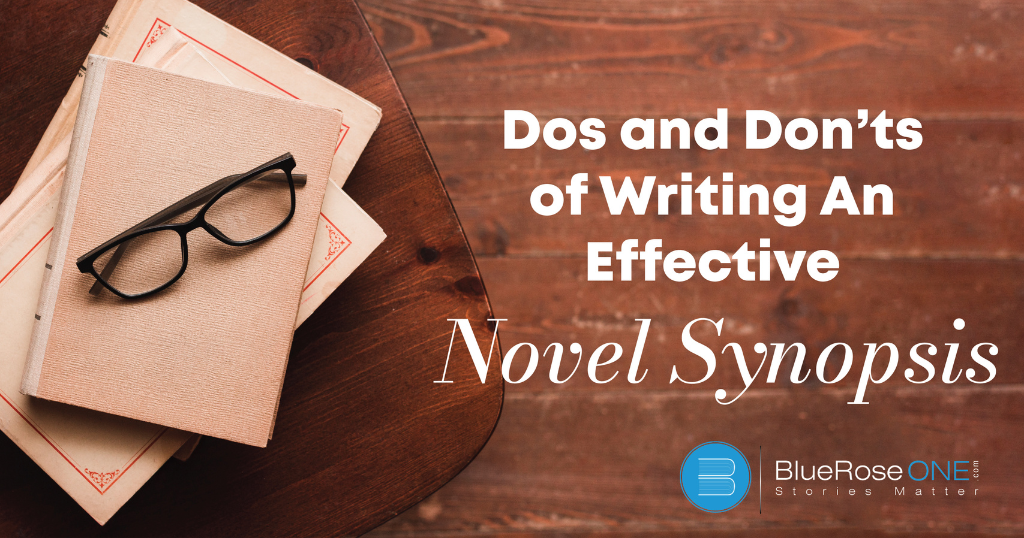
Dos and Don’ts of Writing an Effective Novel Synopsis
Crafting a compelling novel synopsis is an art that requires finesse and a deep understanding of storytelling dynamics. In the intricate world of literary representation, a synopsis serves as a powerful tool, offering a condensed yet captivating preview of the entire narrative. This guide explores the dos and don’ts of creating an effective novel synopsis, providing insights into the purpose and methodology behind this critical piece of writing. Understanding the Purpose of a Novel Synopsis The novel summary is critical in providing a glimpse of the complete plot and encapsulating its key parts within a short framework of 500 to 800 words. Its primary goal is to present a detailed review of the work to possible agents and publishers, giving them a look into the substance of the story. At its heart, the summary acts as a strategic instrument for encapsulating the novel’s major components. This involves introducing the main characters, establishing the main story arcs, and revealing the final resolution. The objective is to create a fascinating story that attracts the interest and intrigue of literary specialists, rather than just summarising. The synopsis is an effective marketing tool since it condenses the narrative into a brief summary. It serves as a teaser, tempting agents and publishers to read the book further and highlighting the novel’s distinctive traits and storytelling attraction. This concise yet thorough summary serves as the initial point of contact, enabling industry professionals to delve into the complexity and depth of the whole work. In essence, the novel description is a skillfully prepared pitch intended to pique the reader’s attention and curiosity. It strikes a fine balance between revealing enough to captivate without disclosing every detail. Writing a successful summary necessitates a great awareness of storytelling subtleties in order to condense the tale into an engaging narrative that leaves a lasting impression. The Dos: Crafting a Captivating Synopsis Begin with a Strong Hook: Start your synopsis with a compelling hook that immediately grabs the reader’s attention. Whether it’s an intriguing question, a thought-provoking statement, or a vivid description, the opening should make agents and publishers eager to dive into your story. Example: In the heart of a bustling city, where shadows whispered secrets and neon lights painted tales of intrigue, a mysterious package arrived at Detective Emily Harris’s doorstep. Little did she know that unwrapping it would unravel a web of conspiracy that could shake the foundations of the city she swore to protect. Introduce the main characters with clarity: Clearly introduce your main characters, providing enough detail for readers to connect with them emotionally. Highlight their motivations, conflicts, and how they drive the narrative forward. Example: Emily Harris, a seasoned detective haunted by a past she can’t escape, finds herself entangled with the charismatic yet enigmatic Lucas Blackwood. As they navigate the city’s underbelly, each step reveals not only the darkness around them but also the scars they carry from their own histories. Outline the central conflict: Clearly articulate the central conflict of your novel. What challenges do your characters face, and what are the stakes? Convey the tension and urgency of the plot to keep readers invested. Example: When a high-profile politician’s daughter goes missing, Emily and Lucas are thrust into a labyrinth of corruption and power plays. As they dig deeper, they unearth a conspiracy that could shatter the delicate balance between the city’s underworld and its elite, putting them in a race against time to expose the truth. Showcase Character Development: Briefly touches on the evolution of your characters throughout the story. Show how they grow, change, or face challenges, emphasising the emotional journey that adds depth to your narrative. Example: As Emily battles her inner demons and grapples with a truth she never wanted to confront, Lucas confronts his own demons from a past life. Their journey isn’t just about solving a case; it’s a poignant exploration of redemption, forgiveness, and the resilience of the human spirit. Cover Major Plot Points: Outline the significant plot points and twists without delving into excessive detail. Highlight the key events that drive the narrative, maintaining a balance between providing enough information to pique interest and avoiding unnecessary spoilers. Example: From the pulse-pounding chase through dimly lit alleys to the heart-wrenching revelation in the abandoned warehouse, each step brings Emily and Lucas closer to the shocking truth. Betrayals, unexpected alliances, and a twist that no one saw coming—the narrative unfolds, leaving readers on the edge, craving the resolution they never saw coming. Convey the resolution: Clearly communicate how the story concludes. Address the major questions or conflicts presented earlier in the synopsis and provide a sense of closure. Example: As the city’s secrets unravel, Emily and Lucas expose a sinister plot that implicates those in the highest echelons of power. In a climactic showdown atop the city’s tallest skyscraper, they confront their own demons and bring the culprits to justice. Yet, the victory is bittersweet, leaving scars that time may never fully heal. Keep It Concise and Focused: Aim for clarity and conciseness. Avoid unnecessary details or subplots that may distract from the main narrative. Focus on the core elements that define your novel. Example: Striking a balance between the seedy underbelly of the city and the polished façade of political elites, the narrative meticulously follows Emily and Lucas through a maze of deception. The focus remains unwavering on the abduction case and its far-reaching consequences, steering clear of tangential details that may dilute the central narrative. Showcase Your Writing Style: Let your writing style shine through the synopsis. While it should be clear and concise, infuse it with the same tone and atmosphere found in your novel. This gives agents a glimpse into your writing prowess. Proofread and edit: Thoroughly proofread and edit your synopsis. Ensure it is free of grammatical errors and typos. A polished synopsis reflects your professionalism and attention to detail. Tailor It to Submission Guidelines: Customise your synopsis according to the submission guidelines of agents or publishers. Follow any specific…
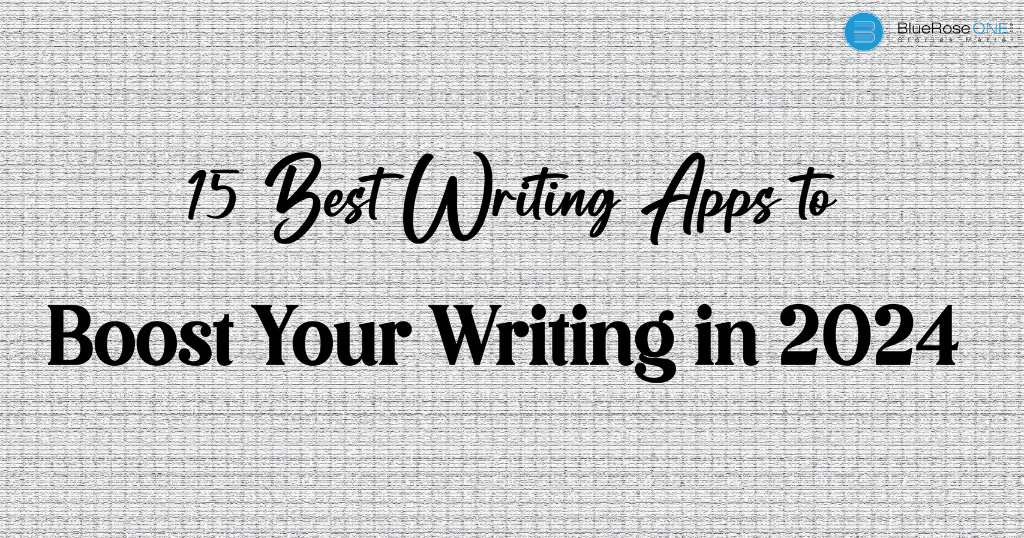
The 15 Best Writing Apps to Boost Your Writing in 2024
In the digital age, authors have access to a plethora of tools that may dramatically enhance their writing process. These tools have evolved into indispensable companions for writers of all levels of expertise, ranging from assisting in the conception of creative ideas to meticulously refining the final draft. As we approach 2024, it becomes increasingly important to become acquainted with the 15 top writing applications that promise to not only improve the writing experience but also raise overall productivity. These programmes cater to the different needs of both new and experienced authors, providing a plethora of features that correspond with the demands of the modern writing scene. Join us as we explore the best writing applications positioned to influence and enrich the craft of writing in the digital age. Scrivener Ulysses iA Writer Plottr Reedsy Book Editor yWriter Storyist Linguix ProWritingAid Hemingway Wordtune Writer.com Ginger Software FlyPosts AI FocusWriter Scrivener Scrivener is a comprehensive and adaptive writing tool that caters to the many demands of authors. One of its distinguishing characteristics is its capacity to successfully organise large tasks. Scrivener supports smooth navigation and editing by letting users divide their work into digestible pieces. The corkboard component is particularly significant, allowing authors to graphically organise and outline their work. This visual technique may boost creativity while also assisting in the structural development of a composition. Scrivener is popular among writers because of its adaptability to diverse writing styles and project kinds. Scrivener’s organisational capabilities make it simple to keep track of ideas, research, and drafts whether working on a novel, research paper, or screenplay. Its powerful features make it an excellent alternative for authors who appreciate both creativity and project management in their writing process. You may also like: Book Writing Tools That Actually Make a Difference Ulysses Ulysses stands out as a simple writing programme for individuals who value a distraction-free writing environment. The app has a simple and easy-to-use design that emphasises content above superfluous functionality. Its sophisticated Markdown editor improves the writing experience by giving a quick and easy way to format text without interrupting attention. Ulysses’ strength resides in its dedication to simplicity. Writers like the app’s ability to remove extraneous components, allowing them to focus on their creative process. Ulysses is a wonderful alternative for authors looking for a simple yet powerful tool to bring their ideas to life, thanks to its clean interface and comprehensive Markdown support. iA Writer A Writer has received praise for its simplicity and commitment to plain text writing. The software provides a clear and concentrated atmosphere for authors to focus entirely on their thoughts. The Focus Mode, which highlights the current text, is a distinctive feature that helps users stay interested and absorbed in their work without interruptions. iA Writer’s beauty stems from its user-friendly design and dedication to important writing functionality. The app’s minimalism does not sacrifice functionality; rather, it improves the writing experience. Because of its commitment to plain text, iA Writer is an excellent alternative for authors who want a simple interface without compromising the vital tools required for productive and immersive writing. Plottr Plottr is a specialist writing tool for authors who value thorough planning and outlining as part of their creative process. This programme is a helpful tool for authors who wish to structure their stories. Authors may use Plottr to quickly structure tale components, maintain timings, and guarantee consistency throughout their plots. Because of the tool’s emphasis on plotting, it’s a popular choice among individuals who believe in rigorous planning before beginning the writing process. Plottr’s power resides in its capacity to assist authors in visualising the arc of their works. It allows a thorough picture of the story by giving an ordered place for characters, events, and timeframes. This visual technique may greatly improve the storytelling process by helping authors to detect potential issues in their plot structure before they become writing challenges. You may also like: Exploring English Literature: Literary Landscapes Reedsy Book Editor Reedsy Book Editor is a strong online application that helps with book authoring and formatting. Its distinguishing feature is the collaborative environment it provides, which enables authors to collaborate seamlessly with editors and designers throughout the book development process. This collaborative method improves the entire process of book production, making it popular among writers who value cooperation and professional advice. One of Reedsy Book Editor’s significant features is its user-friendly interface, which simplifies the typically hard operation of creating a book. Authors may concentrate on their work while the programme handles the technical details, resulting in a polished and properly prepared final output. The agreement strengthens Reedsy Book Editor’s position as a holistic option for writers seeking a seamless and speedy writing and publishing process. yWriter yWriter stands out as a novel-writing programme designed to assist authors in organising their work into structured chapters and scenes. This tool adopts a systematic approach to writing, providing features for character and location organization. The writer’s focus on structure aims to help writers maintain a cohesive and well-paced narrative throughout their novels. The strength of yWriter lies in its commitment to providing a structured framework for writers. By breaking down the writing process into manageable components like scenes and characters, yWriter encourages authors to approach their work systematically. This approach is particularly beneficial for writers who find value in detailed planning and organisation before delving into the creative writing process. Storyist Storyist caters to the needs of novelists and screenwriters by combining writing and project management features in a single software solution. This comprehensive tool allows writers to outline, write, and revise their work efficiently. A storyteller’s integrated approach is particularly advantageous for authors who appreciate a seamless transition between planning and executing their creative ideas. One of Storyist’s notable features is its ability to support both novelists and screenwriters, making it versatile for various storytelling formats. The software provides tools for outlining plots, developing characters, and managing the overall project timeline. For writers who juggle multiple aspects of…
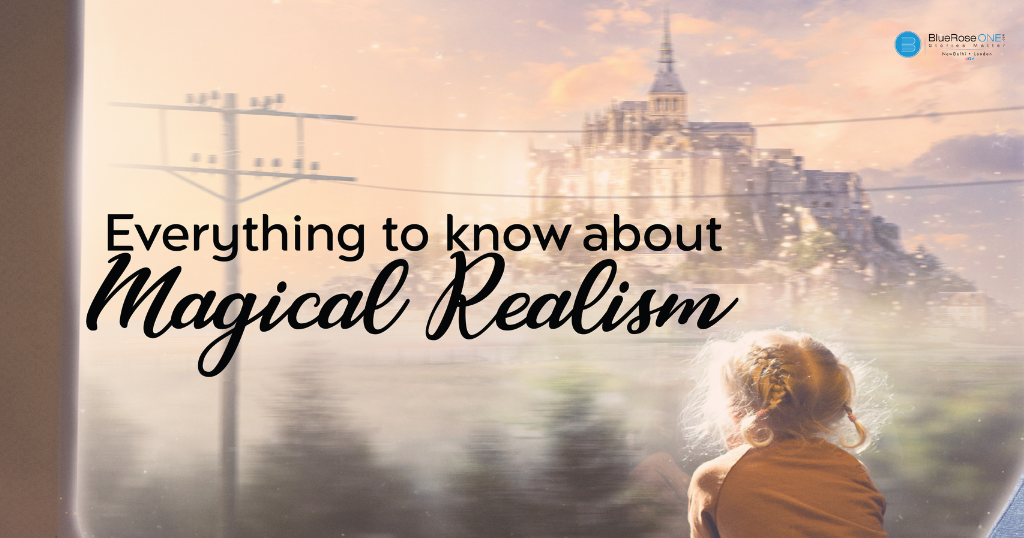
Everything to Know about Magical Realism | Literary Genre
Magical realism, a literary genre that defies conventional boundaries and introduces enchanting elements into the fabric of reality, has left an indelible mark on the world of literature. Originating in Latin America, this captivating genre has transcended cultural borders, influencing writers globally. In this in-depth exploration, we will traverse the landscapes of magical realism, dissect its defining features, trace its historical roots, examine its prominent literary figures, and ponder its enduring impact on the literary world. Defining Magical Realism: Magical realism, at its core, is a narrative style that seamlessly integrates magical or fantastical elements into a realistic setting, creating a world where the extraordinary becomes a natural part of everyday life. Unlike traditional fantasy genres that transport readers to alternate realms, magical realism invites them to explore the magical within the mundane. The genre blurs the lines between reality and fantasy, challenging readers to question their perceptions of the world. You may also like: How to Write an Author Bio | BlueRoseOne.com Characteristics of Magical Realism: Everyday Enchantment: Magical realism transforms the mundane into the extraordinary by seamlessly integrating magical occurrences into the everyday lives of characters. This blurring of the lines between the ordinary and the supernatural creates a narrative landscape where the fantastic is treated matter-of-factly. This technique invites readers to view the world through a different lens, where enchantment is woven into the fabric of daily existence. In Gabriel Garcia Marquez’s “One Hundred Years of Solitude,” the character Remedios the Beauty ascends to the sky while folding laundry, a fantastical event presented with the same nonchalant tone as any other daily chore. By grounding magical elements in the routine of the characters, Marquez establishes a world where the extraordinary is as commonplace as the sunrise. Ambiguous Boundaries: A hallmark of magical realism is the deliberate ambiguity surrounding the boundaries between reality and fantasy. This intentional blurring challenges readers to question their perceptions and embrace a narrative that defies strict categorization. The ambiguity serves as an invitation to explore the story with a sense of wonder and an openness to multiple interpretations. Take Haruki Murakami’s “Kafka on the Shore,” where characters slip seamlessly between dreamlike sequences and the tangible world. The narrative leaves the reader in a constant state of uncertainty, questioning whether events are truly magical or merely a product of the characters’ perceptions. This deliberate ambiguity adds layers of complexity, inviting readers to engage actively with the narrative. Cultural Embeddedness: Magical realism often draws inspiration from cultural contexts, infusing narratives with elements from folklore, mythology, and indigenous beliefs. This cultural embeddedness not only adds authenticity to the story but also allows authors to explore and celebrate the unique aspects of different cultures. Isabel Allende’s “The House of the Spirits” is steeped in Latin American cultural traditions, incorporating spirits, mystical powers, and familial connections that are deeply rooted in the region’s folklore. The infusion of cultural elements enhances the narrative, making it a rich tapestry that reflects the diversity and depth of a specific cultural milieu. Character-Centric Exploration: In magical realist literature, characters are typically everyday individuals thrust into extraordinary situations. Their reactions to magical occurrences often mirror the reactions one might have to commonplace events, contributing to the genre’s unique blend of the ordinary and the extraordinary. Salman Rushdie’s “Midnight’s Children” features Saleem Sinai, born at the exact moment of India’s independence, who discovers he possesses supernatural abilities. Despite these powers, Saleem grapples with the same existential questions and personal challenges as any ordinary person, highlighting the genre’s emphasis on the human experience. Narrative Fluidity: Magical realism embraces a fluid narrative style, seamlessly transitioning between the real and the magical. This narrative flexibility allows authors to present fantastical elements without disrupting the overall flow of the story. In Laura Esquivel’s “Like Water for Chocolate,” the magical realist elements, such as Tita’s ability to infuse her emotions into the food she cooks, are seamlessly woven into the narrative. The story unfolds with a rhythmic fluidity, blurring the boundaries between the magical and the everyday and creating a cohesive reading experience. In conclusion, the essence of magical realism lies in its ability to transform the ordinary into the extraordinary, challenging readers to explore the ambiguous boundaries between reality and fantasy. Cultural richness, character-centric exploration, and narrative fluidity further enhance the genre’s enchanting allure, creating a literary landscape where the magical and the mundane coexist harmoniously. You may also like: The Importance of Professional Editing in Self-Publishing Historical Roots: Latin American Genesis: Magical realism finds its literary roots in Latin America, particularly in the works of writers such as Gabriel Garcia Marquez, Isabel Allende, and Jorge Luis Borges. The genre gained prominence in the mid-20th century, with Marquez’s “One Hundred Years of Solitude” often considered a seminal work in magical realist literature. Beyond Latin America: While Latin America served as the cradle of magical realism, the genre has transcended geographical boundaries. Authors from various cultural backgrounds, including Salman Rushdie, Haruki Murakami, and Toni Morrison, have embraced and adapted magical realism, infusing it with their unique perspectives. You may also like: Audible Titles vs Physical Books: Which One is Best for you? Prominent Figures in Magical Realism: Gabriel Garcia Marquez: Widely regarded as the father of magical realism, Marquez’s works, particularly “One Hundred Years of Solitude” and “Love in the Time of Cholera,” are quintessential examples of the genre. His lush prose and intricate storytelling have set the standard for magical realist literature. Isabel Allende: Allende, a Chilean-American author, has made significant contributions to magical realism with works like “The House of the Spirits.” Her storytelling skills and incorporation of magical elements into family sagas have solidified her place in the pantheon of magical realist writers. Haruki Murakami: Hailing from Japan, Murakami is known for blending the ordinary with the surreal in his novels. Works such as “Kafka on the Shore” and “1Q84” showcase his mastery of magical realism, infusing contemporary settings with dreamlike and otherworldly elements. You may also like: Find the Benefits of Reading Books Online: Beyond the Pages Impact…
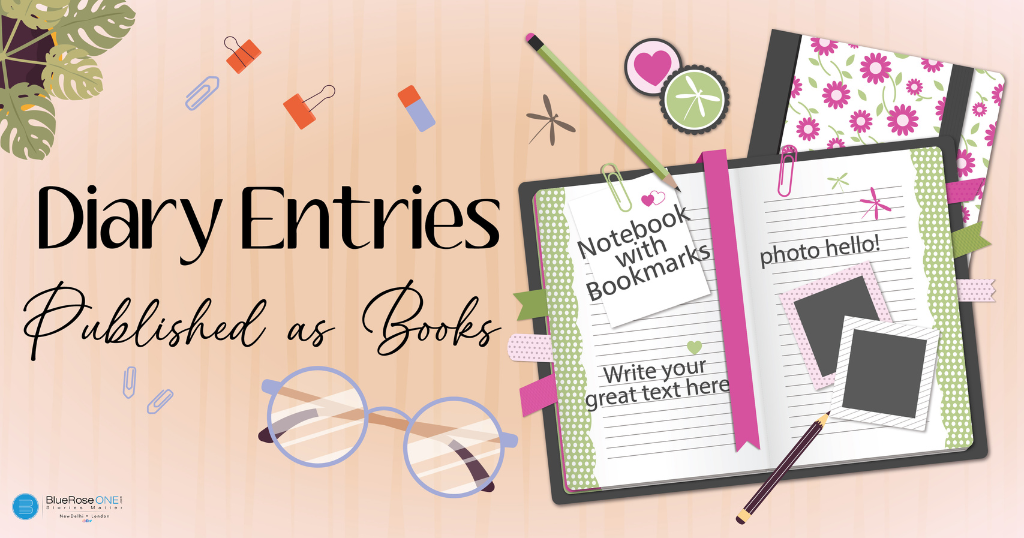
How to Create, Write & Publish Diary Entries as Books
Diaries, those intimate companions of our thoughts, have long served as a canvas for self-expression, a mirror reflecting our innermost emotions and experiences. However, what happens when these personal narratives transcend the pages of secrecy and find themselves bound into books for the world to read? In this exploration, we delve into the fascinating world of diary entries published as books, uncovering the allure, impact, and transformative power of sharing one’s innermost musings with a broader audience. You may also like: Is Kindle Direct Publishing right for Your Next Book? You may also like: 20 Satire Examples in Real-World Every Writer Should Know How can you get your Diary Entries published? Turning diary entries into published books is a rewarding yet intricate process that involves several steps. Here is a guide on how to transform your diary into a book: In the evolving landscape of personal expression, the journey from diaries to published books stands as a testament to the power of storytelling. Whether as memoirs, novels, or digital narratives, these shared diaries forge connections, bridge gaps, and offer readers a profound sense of shared humanity. Read: Amazon Ads for Authors: How Authors Can Promote Their Books Through Amazon Ads You may also like: Mistborn Series in Order: Start to Finish Authors, daring to transform their private musings into public narratives, embark on a journey of self-discovery and empowerment. As readers, we are invited to witness the transformative power of these diaries, understanding that within the intimate pages lie not just personal stories but the collective heartbeat of the human experience. In this convergence of the personal and the universal, the act of sharing one’s diary becomes an invitation to empathise, connect, and celebrate the beautifully complex tapestry of life.
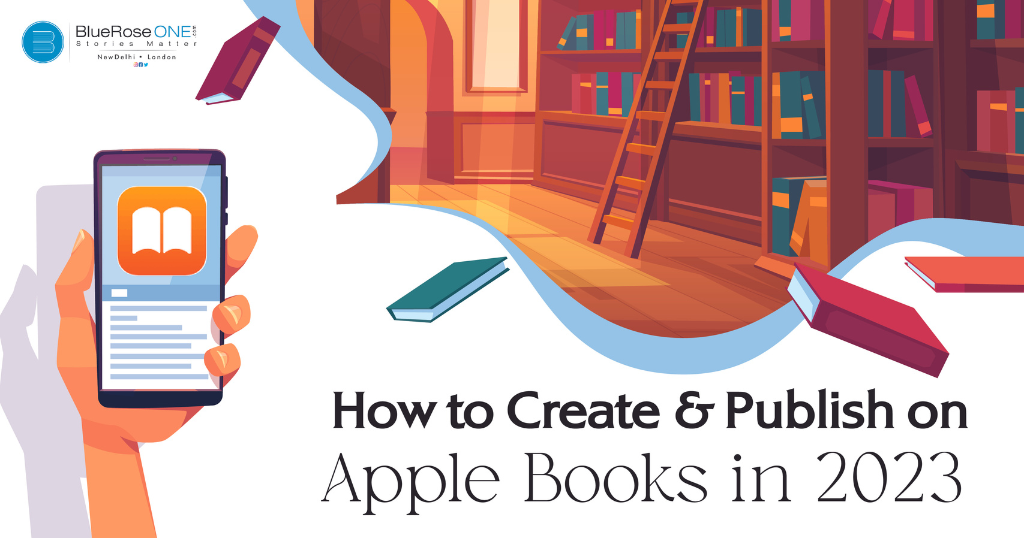
How to Create and Publish your Book on Apple Books in 2024?
In the ever-evolving landscape of self-publishing, reaching a global audience has become more accessible than ever. Apple Books, with its vast user base and seamless integration into Apple’s ecosystem, is a lucrative platform for authors looking to publish their works independently. In this comprehensive guide, we’ll explore the step-by-step process of creating and publishing your book on Apple Books in 2024. Read: A Complete Guide: How to Make Your Book an International Bestseller. Understanding Apple Book Publishing Before we delve into the specifics, it’s crucial to grasp the fundamentals of Apple Books and its significance in the publishing world. What are Apple Books? Apple Books, formerly known as iBooks, is Apple’s dedicated platform for purchasing, downloading, and reading digital books. With millions of users worldwide, it offers a significant opportunity for authors to showcase and distribute their work. Advantages of Publishing on Apple Books Global Reach: Apple Books is available in over 50 countries, providing authors with a vast international audience. Integration with the Apple Ecosystem: With seamless integration across Apple devices, including iPhones, iPads, and Macs, your readers can access your book effortlessly. Author-Friendly Terms: Apple’s pricing and royalty structure are competitive and author-friendly, allowing you to retain a significant portion of your book’s earnings. Diverse Content Formats: Apple Books supports various content formats, including novels, textbooks, audiobooks, and interactive books, offering flexibility for different genres. Now, let’s move on to the step-by-step guide for creating and publishing your book on Apple Books. Step 1: Prepare Your Manuscript Step 2: Set Up an Apple Books Author Account Step 3: Add Your Book to Apple Books Step 4: Set Pricing and Distribution Step 5: Review and publish Step 6: Promote Your Book Step 1: Prepare Your Manuscript Before you start the publishing process, ensure that your manuscript is professionally edited and formatted. Apple Books has specific guidelines for formatting, so make sure your manuscript adheres to these standards. Formatting Guidelines: File Format: Apple Books accepts manuscripts in EPUB format. Ensure your manuscript is converted into EPUB for compatibility. Cover Design: Design an eye-catching cover that meets Apple’s specifications. The cover is the first thing potential readers will see, so invest time in creating an appealing visual. Step 2: Set Up an Apple Books Author Account To publish your book on Apple Books, you’ll need an Apple ID. If you don’t have one, create an Apple ID on the Apple Books Author website. Once you have your Apple ID, sign in to Apple Books for authors. Key Steps: Visit Apple Books for Authors: Navigate to the Apple Books for Authors portal (https://author.apple.com). Sign in with Apple ID: Use your Apple ID credentials to sign in. If you don’t have an Apple ID, follow the on-screen instructions to create one. Complete your author profile. Fill in your author details, including your bio and author photo. This information will appear on your book’s Apple Books page Step 3: Add Your Book to Apple Books With your author account set up, it’s time to add your book to the Apple Books platform. Uploading your book: Access iTunes Connect: Go to iTunes Connect (https://itunesconnect.apple.com). Add a New Book: Click on the “+” icon to add a new book. Enter essential details such as the title, author name, language, and description. Upload your EPUB file: Upload the EPUB file of your manuscript. Ensure it complies with Apple’s formatting guidelines. Enter book details: Provide additional information, including the ISBN (if applicable), genre, and keywords. This information helps readers discover your book. Step 4: Set Pricing and Distribution Determining the pricing and distribution options for your book is a critical step. Apple Books offers flexibility in setting prices and allows you to choose where your book will be available. Pricing Strategies: Choose a Currency: Select the currency in which you want to set the price for your book. Set the price: Decide on the price of your book. Consider factors such as genre, book length, and market trends. Territorial Rights: Choose whether you want your book available worldwide or in specific regions. Step 5: Review and publish Once you’ve provided all the necessary information and set your preferences, review the details before submitting your book for review. Final Checks: Review Book Information: Double-check all the details you’ve entered to ensure accuracy. Preview Your Book: Use the preview option to see how your book will appear to readers on Apple Books. Submit for Review: Click the “Submit for Review” button. Apple will review your book to ensure it meets their content and formatting guidelines. Wait for Approval: Apple Books will notify you once your book is approved and live on the platform. Step 6: Promote Your Book Publishing your book on Apple Books is just the beginning. To maximise your success, actively promote your work. Promotional Strategies: Utilise social media: leverage platforms like Twitter, Instagram, and Facebook to promote your book. Share teasers, reviews, and updates. Engage with Readers: Respond to reader reviews and engage with your audience. Building a connection with readers can lead to word-of-mouth promotion. Participate in Apple Books Promotions: Keep an eye on promotional opportunities provided by Apple Books, such as discounts and featured placements. Optimise Keywords: Use relevant keywords in your book’s metadata to enhance discoverability. Publishing on Apple Books in 2024 offers independent authors an incredible opportunity to showcase their work to a global audience. By following this comprehensive guide, you can navigate the process with confidence, from preparing your manuscript to promoting your published book. With dedication and strategic promotion, your book could find its place among the vast collection of literary works on Apple Books, reaching readers around the world. Publish your book with BlueRoseONE and become a bestselling author. Don’t let your dream of becoming an author fade away, grab the opportunity now and publish your book – be it fiction, non fiction, poetry or more. Happy publishing!
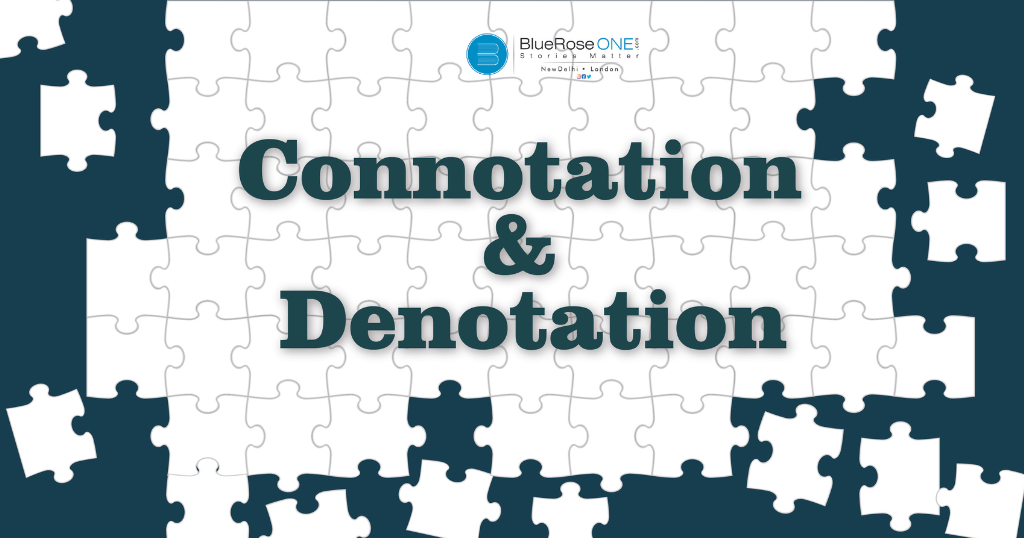
Connotation and Denotation: Meaning, Examples & Difference
In the intricate tapestry of language, words serve as both tools and artists, weaving nuanced meanings through connotation and denotation. This exploration delves into the dynamic interplay of these linguistic elements, unravelling their significance, providing examples, and elucidating the subtle yet impactful differences. You may also read: 7 Point Story Structure: Definition, Examples and More Understanding Connotation Connotation is the intricate dance of language that transcends the mere dictionary definitions of words. It is the realm of emotions, cultural nuances, and subjective interpretations that add layers of meaning to a word, shaping the way it is perceived and the responses it elicits. Beyond the straightforward denotation, words accumulate connotative associations through societal, historical, or personal contexts. The term “home” exemplifies the richness of connotation. Denotatively, it refers to a place where one lives. However, connotatively, “home” often carries emotions of warmth, security, and comfort. This emotional resonance transforms the word into a powerful symbol of belonging, transcending its literal definition. The connotation of “home” varies from person to person based on their experiences, cultural background, and individual perceptions. Similarly, the word “freedom” encapsulates a spectrum of connotative meanings. Denotatively, it signifies the state of being free from coercion or restraint. However, connotatively, “freedom” invokes sentiments of liberation, autonomy, and self-determination. The emotional charge associated with this word resonates deeply in various contexts, from political discourses to personal empowerment narratives. In essence, connotation breathes life into language, allowing words to carry the weight of human experiences and emotions. It transforms the ordinary into the extraordinary, making language a dynamic and evolving tapestry of meanings. You may also read: What is Situational Irony? Definition, Examples and Tips for Writers Exploring Denotation On the other side of the linguistic spectrum lies denotation, the stalwart anchor to linguistic precision. Denotation represents the literal and dictionary-defined meaning of a word, free from the subjective influences that connotation brings. It is the bedrock of clarity in communication, providing a standardised interpretation that transcends individual perspectives. Consider the word “book.” Denotatively, it refers to a set of printed pages bound together. This definition remains constant across different cultural and personal contexts. The denotation “book” ensures that, regardless of individual connotations or emotions attached to the concept of reading, there is a universal understanding of what constitutes a book. In a similar vein, the word “chair” denotatively describes a piece of furniture with a raised surface for sitting. The denotation remains unchanged, whether the chair is a simple wooden stool or an elaborate, cushioned armchair. The precision offered by denotation is particularly crucial in technical, scientific, or scholarly writing, where accuracy and clarity take precedence over subjective interpretations. In the intricate dance of communication, connotation and denotation coexist, each playing a vital role. While connotation adds depth, emotion, and cultural richness to language, denotation ensures a common ground for shared understanding. Together, they create a linguistic symphony where words resonate with both precision and emotional resonance, capturing the essence of human expression. You may also like: Imposter Syndrome for Authors: Steps to Overcome Imposter Syndrome Connotation vs. Denotation: A Comparative Table Aspect Connotation Denotation Definition The additional, emotional, or cultural meanings that words carry beyond their literal definition. The precise, literal, and dictionary-defined meaning of a word Emotional Tone Carries emotional weight, shaping how a word is perceived and evoking subjective responses. Emotionally neutral, providing a clear and objective meaning. Cultural Nuances Influenced by cultural contexts, often reflecting societal norms, values, or historical associations Less influenced by cultural nuances, focusing on universal meanings. Subjectivity Highly subjective, varying based on individual experiences, perspectives, and cultural backgrounds. Objective, offering a standardised interpretation applicable across contexts. Flexibility Flexible and adaptable, allowing words to convey different emotional shades in different contexts. Fixed and rigid, providing a stable foundation for precise communication. Examples Home connotes warmth, security, and comfort. <br> Freedom evokes sentiments of liberation, autonomy, and self-determination. A book refers to a set of printed pages bound together. Chair: A piece of furniture with a raised surface for sitting. Communication Impact Shapes the emotional resonance of a message, influencing how it’s received and interpreted. Ensures clarity and precision in communication, minimising ambiguity. Literary Usage Widely used in literature to add depth, emotional richness, and layers of meaning to written works. Employed for accuracy and precision, especially in technical or scholarly writing. You may also like: How to Publish a Book? | Publish Your Book | BlueRoseOne Deconstructing Examples: Connotation and Denotation in Action The word “snake”: Connotation: In literature, “snake” conveys cultural and symbolic associations, often suggesting betrayal, deceit, or danger. The connotation adds layers of meaning, contributing to the emotional impact of the word. Denotation: Denotatively, “snake” refers to a legless reptile. The denotation provides a straightforward, literal definition, stripping away emotional connotations. The word “youthful”: Connotation: “Youthful” holds positive connotations, evoking images of vibrancy, energy, and a positive outlook associated with youth. The connotation enriches the word with positive emotional nuances. Denotation: Denotatively, “youthful” strictly means having the characteristics of youth. It provides an objective, factual definition without emotional embellishments. The word “skyscraper”: Connotation: Beyond its literal meaning, “skyscraper” may connote modernity, progress, and urban development. The connotation introduces positive cultural associations to the word. Denotation: Denotatively, “skyscraper” refers to a tall building with a steel framework. The denotation maintains a neutral, factual description devoid of emotional connotations. You may also like: Too Good To Be True a Book By Prajakta Koli Navigating Subjectivity: A Closer Look Connotation’s subjectivity is influenced by cultural and personal associations, as seen in the term “family.” Connotation: “family” connotes warmth, support, and love, capturing positive emotions tied to personal experiences. Denotation: Denotatively, “family” refers to a household of parents and children. The denotation provides a factual, objective definition, separating it from the emotional connotations. Examining these examples illustrates the nuanced interplay between connotation and denotation, showcasing how words carry both emotional depth and factual precision in different contexts. You may also read: What is Ghostwriting? A Complete Guide for Beginners Real-World Application: Marketing Language In marketing, understanding connotation and…
